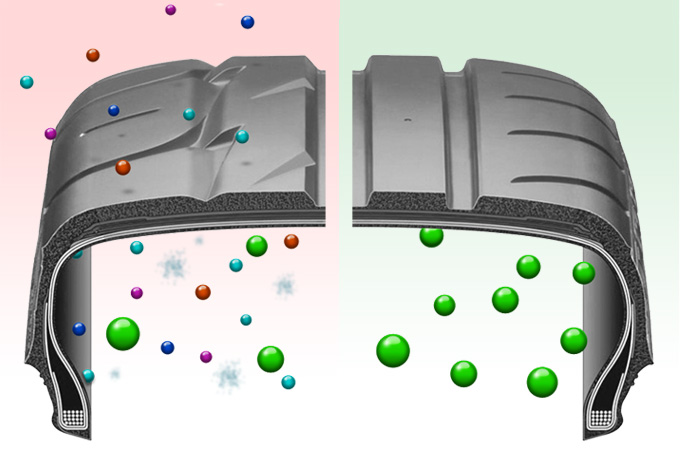Nitrogen Inflation

The use of pure Nitrogen to inflate tyres on passenger vehicles is a fairly new idea as this technology was initially developed for use in Formula 1 racing. However the use of Nitrogen inflation in passenger vehicles has many significant benefits.
| Problems with Air Inflation | Benefits of Nitrogen Inflation | |
|---|---|---|
| Due to the high air pressure within tyres, water vapour within the air condenses to liquid water. As the tyre heats up under use, this water vaporises causing a large pressure spike. This increased pressure reduces the tyres contact patch with the road causing the tyre to wear out faster as well as reducing the tyres traction, grip and braking abilities. | Tyres inflated with pure nitrogen have no water vapour present, meaning tyre pressure will not spike during use. This leads to a tyre both awith a longer life span as well as enhanced safety and performance throughout its life. | |
| The water vapour inherent in air causes an even greater problem for vehicles with T.P.M.S fitted. This is because the water in the tyre causes the sensor and valve assembly to corrode, meaning they have to be replaced prematurely. | Nitrogen is a dry gas and so wil not cause T.P.M.S equipment to corrode. This wil help to save you money by not having to pay to replace T.P.M.S equipment earlier than you should. | |
| The mixture of gases and vapours present in air causes increased friction while a tyre is in use. This increased friction leads to a greater temperature build up in the tyre causing it to wear out faster. | Nitrogen inflated tyre operate at cooler temperature as there is not the mixture of gases found in standard air. This means the tyre will not wear as fast and so last longer. | |
| Many of the gases that make up air have smaller particles than Nitrogen. This means they are able to penetrate the tyre causing a loss of tyre pressure. This loss of pressure reduces tyre life, increases fuel consumption, and reduces the grip, traction, handling and braking performance of the tyre. | Nitrogen particles are large and therefore are unable to penetrate the tyres as easily. This means the tyre will maintain its correct pressure and so last longer, be more fuel efficient and maintain optimum grip, handling, traction and braking performance for longer. | |

|
||
We normally Nitrogen inflate new tyres at a customer’s request, however we are happy to deflate existing tyres and re-inflate with Nitrogen. Currently Nitrogen inflation is only available at selected branches, although the number of branches with this facility is increasing all the time.
To enquire whether your local branch has this facility and to arrange an appointment, please follow the Branch locator link.
To find out how to keep on top of checking your tyre pressures, take a look at our helpful guide here.

